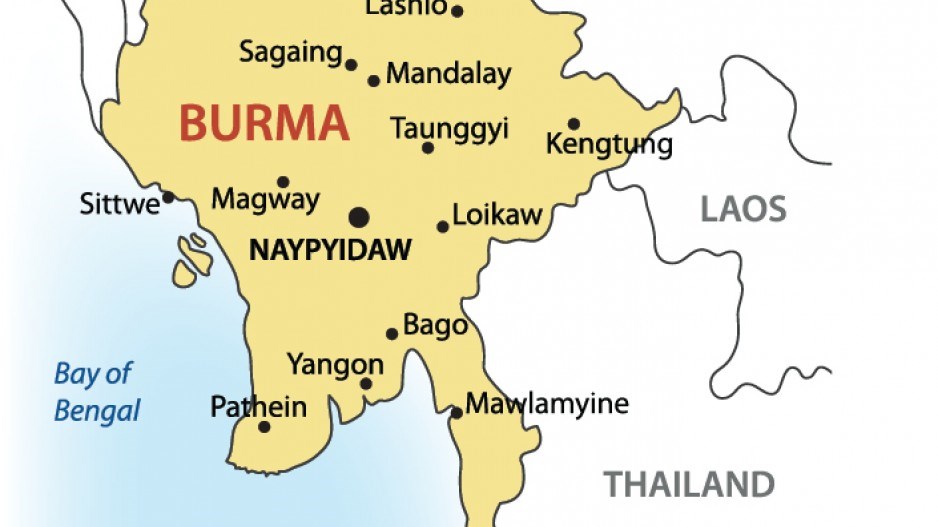2014 is going to be a busy and critical year in Burma as foreign investors rush to stake claims in the last major country in Asia to open up to the outside world.
Since the military regime transformed itself into a quasi-civilian government and began a reform process in 2011, the clamour to pour money into Burma, also known as Myanmar, has echoed the passions for investment in other once-closed Asian economies, China and Vietnam.
Like China and Vietnam, the attractions of Burma are real and many. It is a country the size of France and has a population of 64 million, of whom 46 million are of working age.
Burma is blessed with a natural treasure house of oil, gas and minerals, and the country nestles strategically between India and China, with the rising economies of Southeast Asia, population 500 million, also on its doorstep.
The World Bank expects economic growth to be about 7% this year. At the end of last year, total foreign direct investment was already $42 billion, much of it in mining, oil and gas and manufacturing.
United States-based financial services adviser McKinsey and Co. believes Burma's economy will quadruple by 2030 and that total foreign direct investment will grow to $100 billion in the same period.
But as with the rush into China and Vietnam, the early birds at the Burmese feeding frenzy face major impediments as the country struggles to make the transition from half a century of military rule.
There is little dependable infrastructure. Less than a third of the population is linked to the electricity grid. Only about 10% of the population has access to the Internet or mobile phone networks.
Although the administration, based in the new purpose-built capital of Naypyidaw, has made peace agreements with many of the rebellious ethnic minorities living in Burma's border regions with Bangladesh, India, China and Thailand, there are still significant outstanding conflicts.
The administrative structure is meagre and, as yet, ill equipped to manage or facilitate the investment invasion.
While some critical and basic economic structural reforms have been approved and implemented in the last two years, much remains to be done. There are about 30 bills before parliament for consideration this year, most of them with either direct or indirect implications for business and the economy.
The hope is that this legislation will bring some certainty and clarity to what is now a contorted bureaucratic nightmare, or else an arena devoid of rules and regulations.
At present, the World Bank ranks Burma as one of the most difficult places to do business. Starting a business in Burma involves 11 different procedures, takes at least two months and costs around $60,000.
However, the first fully free elections are due next year, and there is evidence the enthusiasm for reform among the political leadership is slackening ahead of this vote. It may not be until after those elections that the reform process is re-energized.
Another reason for thinking the Naypyidaw establishment may tread cautiously this year is that Burma has finally been allowed to chair the summits and associated meetings of the 10-member Association of Southeast Asian Nations (ASEAN).
Although Burma joined ASEAN in 1997, the other members – Singapore, Malaysia, Brunei, Indonesia, Vietnam, Cambodia, Laos, Thailand and the Philippines – didn't consider the country a suitable host while it remained a military dictatorship.
Burma has been given the responsibility to host this year's ASEAN summit – and thus manage the agenda – at a critical time. ASEAN is due to set up next year its economic community modelled on the European Union and much preparation work remains to be done.
How well Burma manages this event will mark its reputation among its neighbours and the world for some years. •
The scramble to invest in Burma has created a new breed of business road warrior: the "half-pat."
The phrase was coined by Tony Picon of the real estate company Colliers International and springs from a problem facing investors wanting to establish expatriates in Burma.
The average rental rate for property in the commercial centre, Rangoon, is $80 a square metre, dramatically more than the $30 average in Hanoi and $25 in Bangkok.
So, many foreign companies wanting to do business in Burma station their executives in Thailand and expect them to operate out of Rangoon hotel rooms when a personal presence is needed.
Rangoon's exorbitant rental rates result from the country's inability so far to cater to the basic needs of an international business community avid to invest in what is seen as the last major Asian country to open up for development.
There are, however, many other reasons for caution. Last week the British business analyst Maplecroft issued a tough risk report on Burma, also known as Myanmar.
Confronting Burma's "complex and ill-developed legal framework will be a major challenge," said the report.
"Investors will find that the business environment is skewed in favour of local conglomerates such as the Myanmar Economic Corporation. These businesses have strong ties to the military and have a dominant market position in sectors ranging from fuel distribution to real estate."
With an economy and education system that has stagnated over the half-century of military rule, investors will find a severe shortage of skilled labour. It is hard to find qualified local workers for mining, construction, forestry, manufacturing and agricultural industries, said the Maplecroft report.
However, Bangkok-based Australian lawyer John Hancock recently told his home media that deficiencies in Burma's education, mining, land titling, mapping and legal system are also all opportunities for Australian entrepreneurs.




